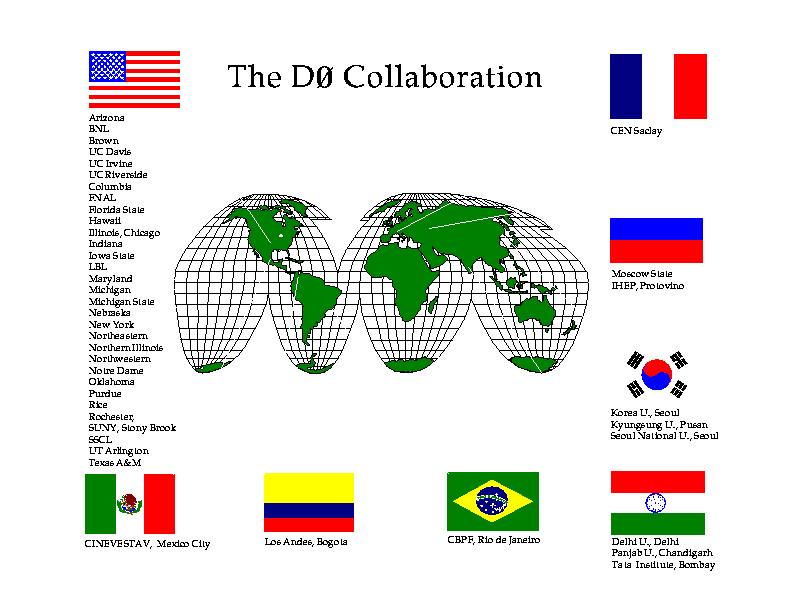DZero Collaboration
The DZero collaboration is one of two teams of experimenters exploring the fundamental nature of matter in particle collisions at Fermilab's Tevatron, the world's most powerful accelerator. Over 400 physicists and graduate students work together in this search for nature's building blocks. The LAFEX involvement in this collaboration started in 1985 and became stronger ever since, having now 16 collaborators from our side. Why does it take over 400 physicists to go after particles as small as the quarks within the nucleons of atoms? The answer lies in the size and complexity of the instruments for high-energy physics research. Advances in particle physics have pushed the scale of research instruments beyond the resources of any single university. Today's experiments could not be done without the efforts of hundreds of scientists to design and build the detectors capable of discovering particles like the top quark. DZero's experimental apparatus took more than $50 million and eight years of work by physicists and engineers to design and build. The collaboration must keep the detector working at the peak of its capability. Each of its several subsystems is more complex in itself than an entire experiment from the days of 20 years ago. A discovery signal consists of just a few events, at the edge of statistical significance--a mere handful of several million million antiproton collisions that occur during a months-long collider run at the Fermilab accelerator. To keep the detector running smoothly requires thousands of hours of physicists' effort each week, full-time jobs for more than 200 physicists, many of whom are also university professors with teaching responsibilities, or graduate students with courses to complete. Besides the care of the detector, physicists on the DZero collaboration have the equally challenging job of managing the data their detector collects. When the experiment has accumulated data from a few months of operation, the numerical representations of the 10 to 20 million stored collision events occupy about 10 million million bytes of computer disk space. The LAFEX team have been working in all parts of this complex system, from detector building and caring to the very last effort of the Physics Analysis, the effort to understand what the data are saying. For more information about Dzero click Here For a picture of the Detector click Here
And for a description of the Detector click Here
|
||
